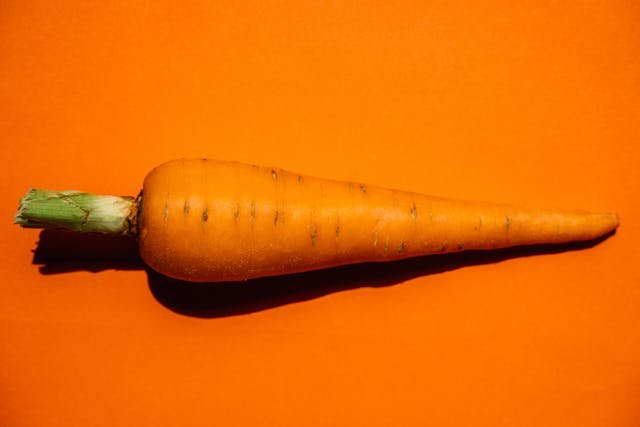
Hair care has been a vital part of self-care and beauty rituals for centuries. From ancient Egyptian oils to Ayurvedic treatments in India, people have long sought effective ways of improving hair quality. Today, many of these age-old practices are blended with modern research to help us achieve healthier, shinier hair. Maybets Online Casino offers an exhilarating gaming experience for players looking to enjoy a wide variety of casino games from the comfort of their homes. With a user-friendly interface and a vibrant selection of slots, table games, and live dealer options, Maybets caters to both novice and experienced gamers alike. The platform prioritizes customer satisfaction and security, ensuring that all transactions are safe and seamless. Players can take advantage of generous bonuses and promotions that enhance their gaming experience. Regular updates and new game releases keep the excitement alive, allowing players to explore fresh titles and innovative features. For more information and to start your gaming journey, visit their official site: https://maybets.or.ke/. Join the community of thrill-seekers at Maybets Online Casino and spin your way to potential winnings today!
Here’s a guide to improving hair quality naturally with tips that focus on strengthening, moisturizing, and nourishing hair from root to tip. Odibet Kenya has revolutionized the online sports betting landscape in the country, offering an exciting platform for punters to engage with various sports events. With user-friendly navigation, players can easily place bets on popular sports such as football, basketball, and rugby. The competitive odds provided by Odibet ensure that users have the best possible returns on their wagers. One of the standout features of Odibet is its commitment to security and customer satisfaction. The platform provides numerous payment options, ensuring seamless transactions for users. Additionally, the live betting feature enhances the experience, allowing bettors to place wagers in real-time as events unfold. For those looking to explore the world of online sports betting, Odibet is an excellent choice. To get started, visit their website here: https://odibet.me.ke/ and experience the thrill of the game from the comfort of your home!
1. Nourish from Within Diet and Hydration
Healthy hair starts from the inside out, and diet plays a significant role in improving hair quality. Certain nutrients strengthen hair follicles, enhance shine, and prevent breakage.
- Protein: Hair is made mostly of keratin, a type of protein. Eating sufficient protein-rich foods like fish, eggs, and beans supports hair strength.
- Biotin and B Vitamins: Found in whole grains, almonds, and eggs, biotin and B vitamins are essential for hair health, promoting growth and volume.
- Omega-3 Fatty Acids: Essential fats found in fish, walnuts, and flaxseed help moisturize the scalp and improve hair’s elasticity.
- Water: Staying hydrated is crucial for improving hair quality, as it helps to keep hair soft and manageable.
2. Use Natural Oils: Ancient Secrets for Modern Hair Care
Oils have been used for centuries to nourish hair and are still popular for their natural benefits in improving hair quality. Oils can moisturize, protect, and repair hair while giving it a luxurious shine.
- Coconut Oil: Known for its penetrating properties, coconut oil deeply moisturizes the hair shaft, reducing protein loss and enhancing strength.
- Argan Oil: Hailing from Morocco, argan oil is packed with antioxidants, vitamin E, and fatty acids, making it ideal for taming frizz and adding shine.
- Jojoba Oil: This oil mimics the scalp’s natural sebum, helping to balance moisture levels and prevent dryness.
- Olive Oil: Rich in vitamins A and E, olive oil strengthens hair, adding softness and shine, especially to coarse or dry hair types.
3. Regular Scalp Massage: Boost Circulation for Hair Growth
A healthy scalp is the foundation of improving hair quality. Regular scalp massages stimulate blood flow, promoting nutrient delivery to hair follicles and encouraging growth.
- Use Essential Oils: Adding a few drops of peppermint or rosemary oil to your scalp massage can further boost circulation and has been shown to encourage hair growth.
- Gentle Pressure: Use your fingertips to massage the scalp in small, circular motions for about five minutes, once or twice a week.
- Consistency Matters: Regular massages can reduce stress, alleviate dryness, and improve overall hair quality with continued use.
4. Opt for Sulfate-Free Shampoos: Gentle Cleansing for Healthier Hair
Harsh detergents, like sulfates, can strip hair of natural oils, leading to dryness and brittleness. Choosing sulfate-free products can help improve hair quality by retaining moisture and preventing damage.
- Gentle Cleansing: Sulfate-free shampoos cleanse without stripping, making them suitable for all hair types, especially color-treated or sensitive scalps.
- Reduced Frizz: Keeping natural oils intact helps reduce frizz, a common problem with sulfate-containing shampoos.
- Added Moisture: Sulfate-free products often contain hydrating ingredients like aloe vera or glycerin, adding moisture to softer hair.
5. Regular Deep Conditioning Treatments: Hydration and Repair
Deep conditioning treatments can be transformative in improving hair quality, particularly for those with dry, brittle, or colour-treated hair.
- Protein Masks: Protein-based conditioners strengthen hair and reduce breakage. However, use sparingly, as too much protein can lead to stiffness.
- Moisturizing Masks: Look for ingredients like shea butter, avocado, or honey for intense hydration and improved elasticity.
- DIY Treatments: Natural ingredients like yoghurt, honey, and eggs can be mixed at home to create nourishing hair masks that improve shine and softness.
6. Minimize Heat Styling: Prevent Damage and Breakage
Excessive heat from styling tools like blow dryers, flat irons, and curling wands can weaken hair and cause split ends. Reducing heat styling is key to improving hair quality over time.
- Air Drying: Whenever possible, let hair air dry to prevent damage from blow drying.
- Heat Protectant Sprays: When using heat tools, apply a heat protectant spray to shield hair from high temperatures.
- Lower Temperature Settings: Opt for the lowest effective heat setting, as high heat can strip moisture and weaken the hair shaft.
7. Trim Regularly: Prevent Split Ends and Promote Healthier Growth
Regular trims are essential for improving hair quality, especially if you struggle with split ends or uneven growth. Trimming removes damaged ends and helps hair look fuller and healthier.
- Frequency: Trim every 6-8 weeks to maintain healthy ends.
- Dusting Technique: For those who want to maintain length, try “dusting” (trimming less than half an inch) to remove only the damaged tips.
- Prevents Split Ends: Regular trims prevent split ends from travelling up the shaft, keeping hair stronger and more resilient.
8. Embrace Silk or Satin Pillowcases: Reduce Friction and Breakage
Switching to silk or satin pillowcases can make a noticeable difference in improving hair quality. Cotton pillowcases can create friction, leading to breakage and frizz, while silk and satin are much gentler.
- Less Friction: Silk reduces friction, preventing breakage and keeping hair smooth and manageable.
- Reduced Frizz: Silk pillowcases help maintain natural oils, reducing morning frizz.
- Better Moisture Retention: Silk doesn’t absorb moisture like cotton, which keeps hair hydrated overnight.
9. Detangle Carefully: Prevent Damage When Brushing
Detangling hair can be a source of damage if done roughly. Using the right tools and techniques is essential for improving hair quality.
- Wide-Tooth Comb: Use a wide-tooth comb or a detangling brush to gently work through knots without breaking hair.
- Start from the Ends: Always start detangling from the ends and gradually work up to the roots to avoid tugging.
- Use Conditioner: Apply a leave-in conditioner or detangling spray to make combing easier and less damaging.
10. Incorporate Vitamins and Supplements: Support Hair Growth
In addition to diet, certain supplements can aid in improving hair quality by providing nutrients that may be hard to get through food alone.
- Biotin: Known for its role in hair health, biotin strengthens hair and supports growth. Many people take biotin supplements specifically for improving hair quality.
- Vitamin D: Low levels of vitamin D are linked to hair loss; taking a supplement can help maintain hair density.
- Zinc and Iron: Both are essential for hair health. Deficiencies can lead to hair thinning, so taking these supplements as part of a multivitamin can support fuller hair.
Improving hair quality involves a mix of healthy habits, gentle styling, and natural treatments. By focusing on nutrition, using natural oils, and treating your hair with care, you can strengthen and enhance its texture, resilience, and shine. Embracing practices that support hair health not only improves its appearance but also contributes to overall well-being, giving you hair that looks and feels naturally beautiful.







